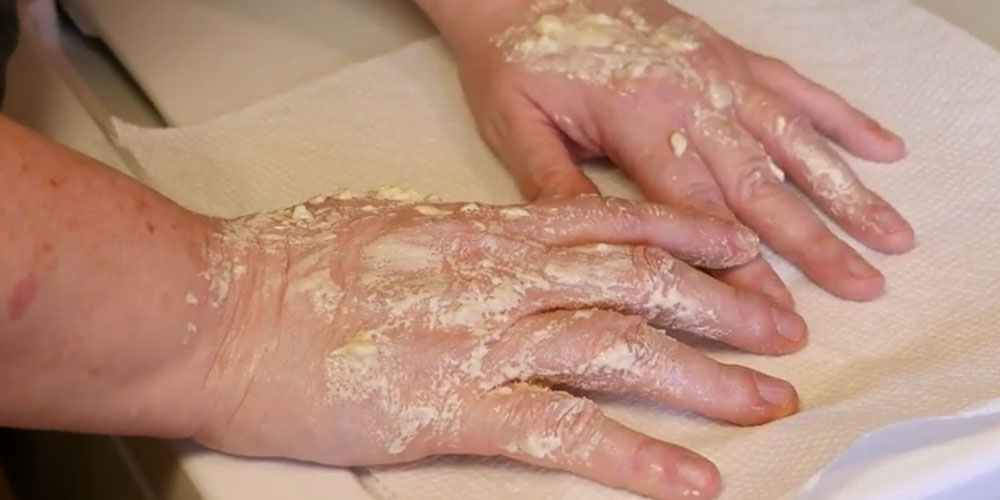How to Remove Spray Foam from Your Hands


Tackling a DIY spray foam insulation project can be rewarding – but it can also get messy.
If you’ve found yourself with sticky spray foam insulation on your hands, don’t worry. This article and video will walk you through the best methods to remove spray foam from your hands, including tips for both wet and dried foam.
Let’s dive in.
Prevention is Key
Before we get into removal methods, it’s worth emphasizing that the best way to handle spray foam on your hands is to avoid it altogether.
Most spray foam cans recommend wearing protective gear, including gloves and goggles, to prevent accidents. But if you’ve gone rogue without gloves, here are some tried-and-true ways to get your hands clean again.
How to Remove Spray Foam from Hands
There are more than a few options available when it comes to removing spray foam from the skin.
1. Act Quickly: Wash Before it Dries
The moment spray foam gets on your hands, stop what you’re doing and wash your hands with soap and water.
Wet foam is much easier to remove than dried foam. If you can’t get to it immediately, or if the foam has already dried, don’t panic. There are still options to tackle the mess.
2. Peel Off Large Chunks
If the foam has dried into small, crusty mountains on your skin, start by peeling off any large pieces.
These chunks are often easier to remove without too much effort. However, you’ll likely still have residue left behind.
3. Use Dish Soap and a Scrub Brush
Dish soap and a scrub brush can help loosen dried foam.
Apply some soap to your hands and use a soft-bristled scrub brush to gently scrub the foam. While this method might not completely remove the foam, it’s a good starting point.
4. Gently Exfoliate with a Pumice Stone
A pumice stone can be an effective tool for removing spray foam from hands.
Wet the stone and gently rub it over the foam-covered areas. Be careful not to apply too much pressure, as this can irritate or tear the skin. For more stubborn spots, you can use a coarser pumice stone but always proceed with caution.
5. Try a Metal File (Only on Thick Layers)
If you have a thick layer of spray foam on your skin, a metal file – like the ones found in pedicure kits – can help.
This method is only recommended for thick foam, as the abrasiveness can damage the skin if not used gently. Use minimal pressure and stop immediately if you feel discomfort.
6. Nail Polish Remover
Nail polish remover containing acetone can soften dried spray foam, making it easier to peel off.
Soak a cotton pad with the remover and apply it to the foam.
Alternatively, you can soak your hands in a small bowl of acetone for a few minutes. Once the foam softens, gently rub or peel it away.
7. Soak Hands in Dish Soap with Warm Water
For a gentler approach, fill a pair of rubber gloves with dish soap and warm water.
Place your hands inside the gloves and let them soak for about an hour. The warm, soapy water will help loosen the foam, making it easier to scrub off.
After soaking, use a nail brush or scrub brush to remove any remaining residue.
Sensitive Skin? Use Caution
If you have sensitive skin, avoid harsher methods like pumice stones, metal files, or prolonged acetone exposure.
Stick with the gentler options, like soaking your hands in soapy water or using a mild scrub brush. Always moisturize your skin after removing spray foam to prevent irritation.
Avoid Spray Foam on Your Skin By Calling the Pros
Removing spray foam from your hands doesn’t have to be a nightmare.
With a little patience and the right tools, you can get your hands back to normal. And next time, remember to grab a pair of gloves before you start your project.
If you want to avoid the hassle of dealing with spray foam altogether, consider hiring professionals for your insulation needs. There are some RetroFoam dealers who are also spray foam insulation experts and can get the job done for you without the mess.
Check out our Find a Dealer page to locate a dealer near you.
Related Articles
Where to Buy Spray Foam Insulation Near Me
About Amanda Emery
Amanda previously has worked as a breaking news and crime reporter, TV news producer, and editor. As a journalist, she has won several awards from The Society of Professional Journalists - Detroit Chapter and the Michigan Press Association. Amanda uses her experience as a journalist to write content that will help educate homeowners on foam insulation benefits. When Amanda isn’t writing, she’s spending time with her husband Chris, daughter Lilith-Maeve, and rescued huskies Danger and Wendigo. She also loves knitting, making art, and cooking.

